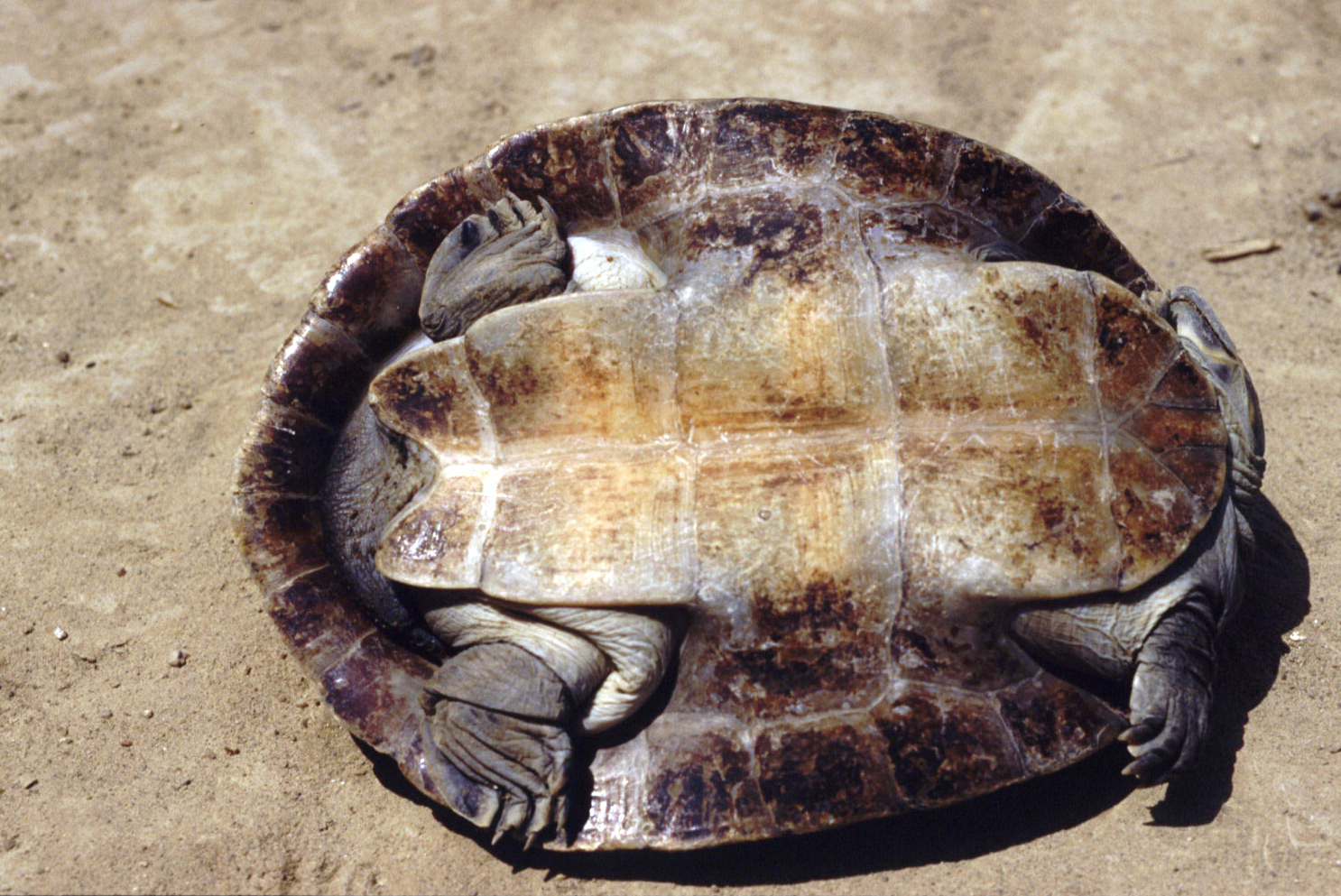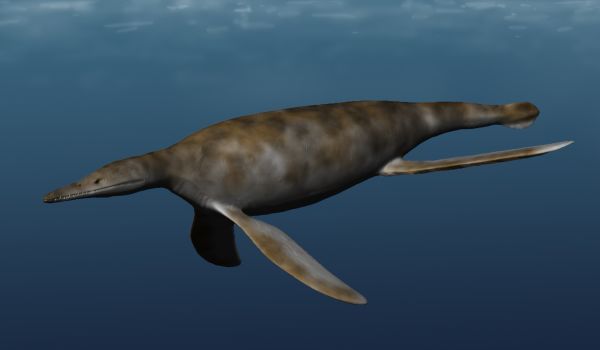|
Platychelyidae
Platychelyidae is an extinct family of pan- pleurodiran turtles, known from the Late Jurassic and Early Cretaceous of Europe, South America, North America, and the Caribbean. It represents the oldest known clade of stem-pleurodires. All known members have been found in marine or coastal deposits. Despite this, their limb morphology suggests that they were not adapted for open marine conditions, but were likely inhabitants of shallow water environments, including brackish and saline waters, and they likely never inhabited environments more marine than lagoons. Their tolerance for saline environments likely aided their dispersal during the breakup of Pangea. Unlike modern pleurodires, which retract their necks to the sides, '' Platychelys'' retracted its neck inwards, similar to modern cryptodire turtles. ''Platychelys'' is strongly morphologically similar to mata mata and snapping turtles, suggesting that it had a similar ecology as a ram or suction feeder. Genera After * '' ... [...More Info...] [...Related Items...] OR: [Wikipedia] [Google] [Baidu] |
Vaca Muerta
The Vaca Muerta Formation, commonly known as Vaca Muerta ( Spanish for ''Dead Cow''), is a geologic formation of Late Jurassic to Early Cretaceous age, located in the Neuquén Basin in northern Patagonia, Argentina. It is well known as the host rock for major deposits of shale oil and shale gas. The large oil discovery in the Vaca Muerta Formation was made in 2010 by the former Repsol-YPF. The total proven reserves are around , and as of 2014 YPF's production alone was nearly .http://www.ypf.com/YPFHoy/YPFSalaPrensa/Paginas/Home.aspx, "YPF firmo un acuerdo con PETRONAS", 18.02.2014 In February 2012, Repsol YPF SA raised its estimate of oil reserves to . The US EIA estimates total recoverable hydrocarbons from this Vaca Muerta Formation to be of oil and of natural gas, more than even the Neuquén Basin's hydrocarbon-rich Middle Jurassic Los Molles Formation holds. As of 2017, there were almost 500 fracking wells, one of the most fracked sites outside North America. Geogr ... [...More Info...] [...Related Items...] OR: [Wikipedia] [Google] [Baidu] |
Pleurodira
The Pleurodira are one of the two living suborders of turtles, the other being the Cryptodira. The division between these two suborders represents a very deep evolutionary divide between two very different types of turtles. The physical differences between them, although anatomical and largely internal, are nonetheless significant, and the zoogeographic implications of them are substantial. The Pleurodira are known more commonly as the side-necked turtles and the name Pleurodira quite literally translates to side neck, whereas the Cryptodira are known as hidden-necked turtles. The Pleurodira turtles are currently restricted to freshwater habitats in the Southern Hemisphere, largely to Australia, South America, and Africa. Within the Pleurodira, three living families are represented: Chelidae, also known as the Austro-South American side-necked turtles, the Pelomedusidae, also known as the African mud terrapins, and the Podocnemididae, also known as the American side-neck river ... [...More Info...] [...Related Items...] OR: [Wikipedia] [Google] [Baidu] |
Rosablanca Formation
The Rosablanca Formation ( es, Formación Rosablanca, Kir) is a geological formation of the Altiplano Cundiboyacense, Eastern Ranges of the Colombian Andes and the Middle Magdalena Basin. The formation consists of grey limestones, dolomites and shales with at the upper part sandstones. The formation dates to the Early Cretaceous period; Valanginian epoch and has a thickness of in the valley of the Sogamoso River. Definition The formation was first defined by Wheeler in 1929. Description Lithologies The Rosablanca Formation is characterised by a sequence of grey limestones, dolomites and shales with a maximum thickness of in the Sogamoso River valley.Galvis & Valencia, 2009, p.17 Stratigraphy and depositional environment The Rosablanca Formation overlies the Arcabuco Formation and is overlain by the Ritoque Formation. The age has been estimated to be Valanginian. Stratigraphically, the formation is time equivalent with the Macanal Formation. Fossils Fossils ... [...More Info...] [...Related Items...] OR: [Wikipedia] [Google] [Baidu] |
Jagua Formation
The Jagua Formation is a Late Jurassic (middle to late Oxfordian) geologic formation in the Sierra de los Órganos and Sierra del Rosario mountain ranges in Pinar del Río Province, western Cuba. Plesiosaur, pliosaur, pterosaur,Barrett et al., 2008 metriorhynchid, turtle and dinosaur remains are among the fossils that have been recovered from its strata. Description The formation comprises marine shales and limestones. The thick Jagua Vieja Member consists of black shales and horizontally laminated marly micritic to biomicritic limestones. The latter contains calcareous concretions which the fossils are found in. The formation overlies the San Cayetano Formation and is overlain by the Guasasa Formation. The bedding direction is steeply dipping towards the northwest. Fossil content Vertebrate paleofauna Other fossils *'' Favreina'' *'' Globochaete'' * '' Gryphaea mexicana'' - Pan de Azúcar Mb. * '' Lepidotes gloriae'' * '' Liostrea mairei'' * '' L. sandalina' ... [...More Info...] [...Related Items...] OR: [Wikipedia] [Google] [Baidu] |
Reuchenette Formation
The Reuchenette Formation is a Jurassic geologic formation in Switzerland. It is Kimmeridgian in age and predominantly consists of well stratified limestone, with lithology variable both laterally and stratigraphically including wackestones, packstones and grainstones, as well as mudstone. Dinosaur remains are among the fossils that have been recovered from the formation, including the Turiasaurian sauropod '' Amanzia greppini,'' alongside a theropod tooth belonging to Ceratosauria indet, originally assigned to '' Megalosaurus meriani.'' teleosaurid crocodyliformes are also known, including '' Sericodon, Proexochokefalos'' and '' Machimosaurus.'' The thalassochelydian turtle '' Solnhofia'' is known from the formation, as is the platychelyid turtle '' Platychelys.'' See also * List of dinosaur-bearing rock formations This list of dinosaur-bearing rock formations is a list of geologic formations in which dinosaur fossils have been documented. Containing body fossils * ... [...More Info...] [...Related Items...] OR: [Wikipedia] [Google] [Baidu] |
Notoemys
''Notoemys'' is an extinct genus of platychelyid turtle known from the Late Jurassic and Early Cretaceous of the Americas. Species * ''Notoemys laticentralis'' Cattoi and Freiburg, 1961 Vaca Muerta, Argentina, Late Jurassic (Tithonian) * ''Notoemys oxfordiensis'' (de la Fuente and Iturralde-Vinent 2001) Jagua Formation, Cuba, Late Jurassic ( Oxfordian) (originally ''Caribemys oxfordiensis'') * ''Notoemys tlaxiacoensis'' Lopez-Conde et al. 2017 Sabinal Formation, Mexico, Late Jurassic (Kimmeridgian) * ''Notoemys zapatocaensis'' Cadena, 2005 Rosablanca Formation The Rosablanca Formation ( es, Formación Rosablanca, Kir) is a geological formation of the Altiplano Cundiboyacense, Eastern Ranges of the Colombian Andes and the Middle Magdalena Basin. The formation consists of grey limestones, dolomites and ..., Colombia, Early Cretaceous ( Valanginian) References External links A New Pleurodiran Turtle from the Jagua Formation (Oxfordian) of Western Cuba.The Journal of P ... [...More Info...] [...Related Items...] OR: [Wikipedia] [Google] [Baidu] |
Valanginian
In the geologic timescale, the Valanginian is an age or stage of the Early or Lower Cretaceous. It spans between 139.8 ± 3.0 Ma and 132.9 ± 2.0 Ma (million years ago). The Valanginian Stage succeeds the Berriasian Stage of the Lower Cretaceous and precedes the Hauterivian Stage of the Lower Cretaceous. Stratigraphic definitions The Valanginian was first described and named by Édouard Desor in 1853. It is named after Valangin, a small town north of Neuchâtel in the Jura Mountains of Switzerland. The base of the Valanginian is at the first appearance of calpionellid species '' Calpionellites darderi'' in the stratigraphic column. A global reference section (a GSSP) had in 2009 not yet been appointed. The top of the Valanginian (the base of the Hauterivian) is at the first appearance of the ammonite genus '' Acanthodiscus''. Subdivision The Valanginian is often subdivided in Lower and Upper substages. The Upper substage begins at the first appearance of ammonite speci ... [...More Info...] [...Related Items...] OR: [Wikipedia] [Google] [Baidu] |
Sabinal Formation
Sabinal may refer to: * Cayo Sabinal, island in Cuba * Rio Sabinal Group Rio or Río is the Portuguese, Spanish, Italian, and Maltese word for "river". When spoken on its own, the word often means Rio de Janeiro, a major city in Brazil. Rio or Río may also refer to: Geography Brazil * Rio de Janeiro * Rio do Sul, a ..., a geologic group in Mexico * Sabinal, Texas {{geodis ... [...More Info...] [...Related Items...] OR: [Wikipedia] [Google] [Baidu] |
Oxfordian (stage)
The Oxfordian is, in the ICS' geologic timescale, the earliest age of the Late Jurassic Epoch, or the lowest stage of the Upper Jurassic Series. It spans the time between 163.5 ± 1.0 Ma and 157.3 ± 1.0 Ma (million years ago). The Oxfordian is preceded by the Callovian and is followed by the Kimmeridgian. Stratigraphic definitions The Oxfordian Stage was called "Clunch Clay and Shale" by William Smith (1815–1816); in 1818 W. Buckland described them under the unwieldy title "Oxford, Forest or Fen Clay". The term Oxfordian was introduced by Alcide d'Orbigny in 1844. The name is derived from the English city of Oxford, where the beds are well developed, but they crop out almost continuously from Dorset to the coast of Yorkshire, generally forming low, broad valleys. They are well exposed at Weymouth, Oxford, Bedford, Peterborough, and in the cliffs at Scarborough, Red Cliff and Gristhorpe Bay. Rocks of this age are found also in Uig and Skye. The base of the Oxfordian ... [...More Info...] [...Related Items...] OR: [Wikipedia] [Google] [Baidu] |
Kimmeridgian
In the geologic timescale, the Kimmeridgian is an age in the Late Jurassic Epoch and a stage in the Upper Jurassic Series. It spans the time between 157.3 ± 1.0 Ma and 152.1 ± 0.9 Ma (million years ago). The Kimmeridgian follows the Oxfordian and precedes the Tithonian. Stratigraphic definition The Kimmeridgian Stage takes its name from the village of Kimmeridge on the Dorset coast, England. The name was introduced into the literature by French geologist Alcide d'Orbigny in 1842. The Kimmeridge Clay Formation takes its name from the same type location (although this formation extends from the Kimmeridgian stage of the Upper Jurassic into the Lower Cretaceous). It is the source for about 95% of the petroleum in the North Sea. Historically, the term Kimmeridgian has been used in two different ways. The base of the interval is the same but the top was defined by British stratigraphers as the base of the Portlandian (''sensu anglico'') whereas in France the top was defined ... [...More Info...] [...Related Items...] OR: [Wikipedia] [Google] [Baidu] |


